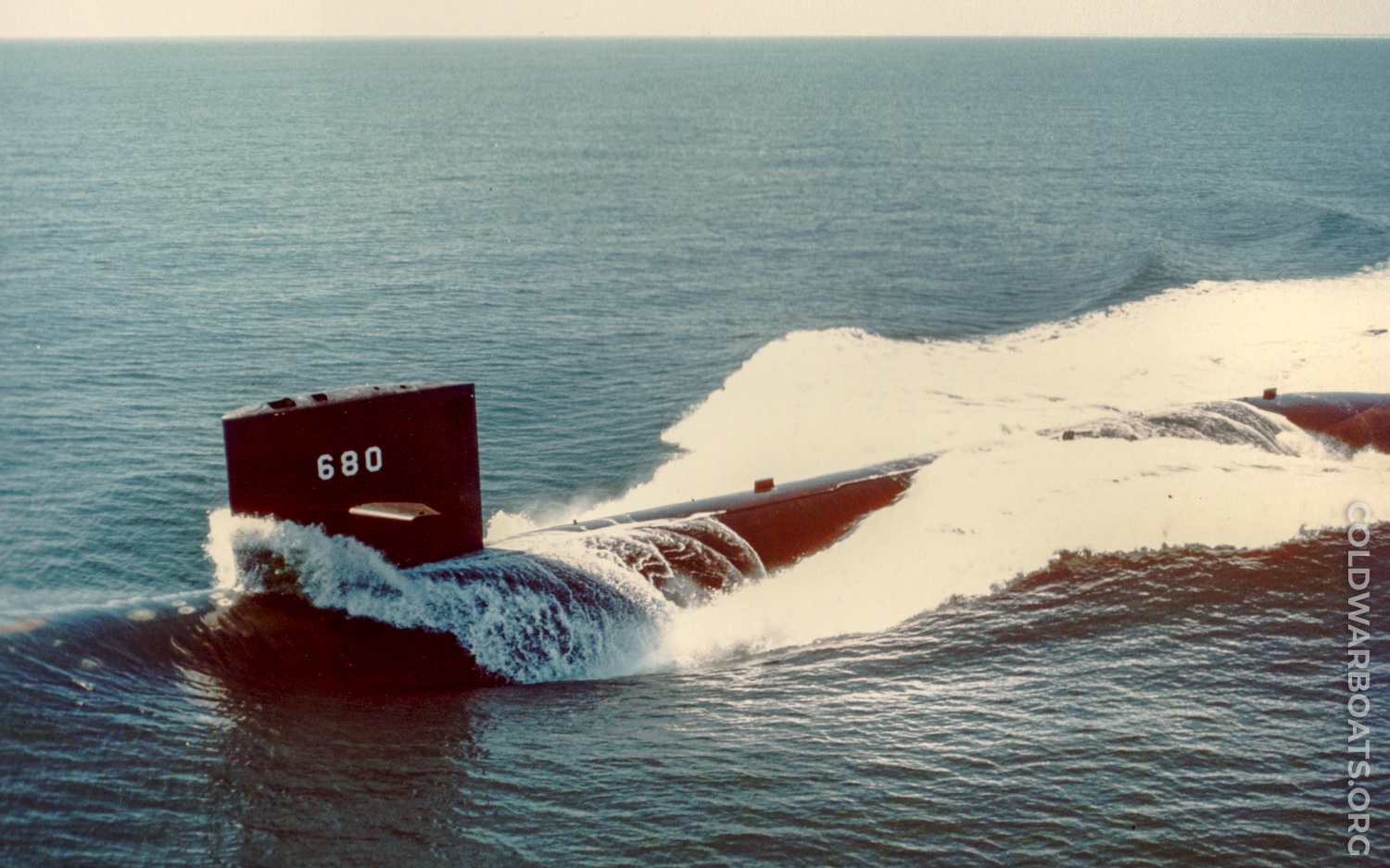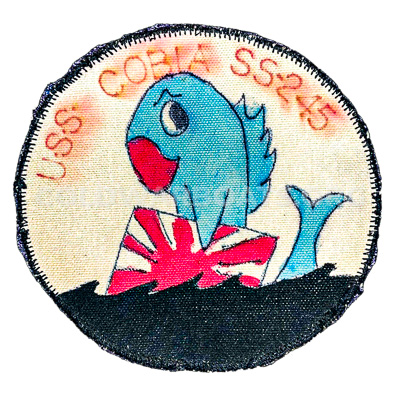Fleet Sea Stories

- Details
- Roger J. Duran
- Sea Stories - 680
- Hits: 1661
Steve Wheeler and myself reported on board to the Bates together. I was an FTG1 at the time, Wheeler was an SN.
We had graduated number one and number two in our Fire Control class so we both had our choice of what ship we would like to be assigned to.
We were good friends in class, competing for the top position. Because of my past experience, I graduated first, but Steve was smart and scored just a smidgen behind me.
There were several boats needing FTG's and I chose the Bates. Steve, being a good friend, also chose the Bates because it was in need of two FTG's.
It wasn't long before I re-qualified on the Bates and Wheeler had earned his dolphins in record time. Fire Control Technician Steve Steuer joined the weps crew during this time, and the three of us were put to work on routine maintenance for Fire Control.
As it turned out, the Bates had eight degree torpedo tubes, meaning that they weren't aligned with the centerline of the boat, but were angled out slightly. This turned out to be important, because earlier boats had been built with six degree tubes.
When running the monthly preventative maintenance (PM), specifically stabilization tests for fire control, it consistently failed, so we worked diligently trying to find the problem.
Months passed without finding anything wrong, other than it didn't pass the PM.
We were questioned by our XO about working so hard attempting to find a problem which "might not exist". (The XO's question was good natured and not a question of our diligence.)
Eventually I realized that the ship had to have been signed off in shipyard acceptance tests, otherwise, we wouldn't be here. I dug through our documentation to find the actual shipyard tests and tried running that test.
Bingo, it passed despite extremely tight tolerances because of all the work we had done aligning the stabilization units. That meant that it was our PM that was defective, not the Fire Control system.
I submitted a feedback report stating that the PM in our package was the wrong test, which met with resistance from our CO who was reluctant to acknowledge that testing that had been done might not have been satisfactory. That the particular PM been passed for a couple of years prior our boarding the boat was a problem for our CO.
The two Steves and myself, all brand new crew, were the only FT's onboard doing tests - the Chief FT was the COB and didn't work on the system. It finally got to the point that we said we could not pass the PM when it clearly was the wrong test and failed.
Eventually the CO submitted the feedback with a warning to us FT's that we better be right! Since the system had passed all PMs for years, the ramifications were serious.
In the end, the feedback was acknowledged with a new monthly PM designed for 8 degree tubes rather than the 6 degree tube test in our current PM package contained.
Both the Weps Officer and XO commended us for our persistance in prosecuting the problem.
I only wish our CO would have commended us for our diligence.
 No comments
No comments- Details
- Bill Cook
- Sea Stories - 604
- Hits: 2168
Another memory is Haddog; you may remember the incident.
It seems that an enterprising crew member (some said it was one of the QM gang) used some light green paper, a few colored pens, a Polaroid camera and a laminating machine to gin up a shipyard military personnel photo ID for a stray dog that spent time about the shipyard.
The dog's name on the ID was Haddog.
All thought is was great fun to see the pooch coming and going with the ID wagging from his collar, with the guards saluting, etc.; all but the CO and XO, that it (or at least they couldn't admit it in public).
I guess there arose quite a furor over shipyard security. After all, what if some mutt-faced spy look-alike or poor, hapless Haddog had crept past the guards on all four, and used the ID to steal top military secrets?
Anyone who looks enough like Haddog's photo to pass security checks deserves all the stolen secrets he can get, I suppose.
Or maybe the security guards need the help. It was said that they actually verified that the dog looked like the photo every time he came into the yard. So it must have been ok.
{Lest the author upset anyone, he dutifully acknowledges the importance of security, and hopes that this light-hearted look at a long-ago incident does not reflect poorly on him.]
- Details
- R.D. Raaz
- Sea Stories - 604
- Hits: 1416
In March 1984, I was Commanding Officer, USS HADDO (SSN 604).
We were scheduled to made a 1500 arrival at the Royal Canadian Naval Base in Esquimalt, B.C.
Fearing intrusion of fog, so prevalent in this part of the world, I had sprinted ahead to ensure an on-time arrival. The weather remained beautiful all day and thus I arrived several hours early. Taking advantage of a sunny spot, we coasted to a stop and watched the festivities of a local sailing regatta.
I became concerned when one of the smaller boats broke out of the pack and took dead aim at my bow. As the vessel closed, it became clear that the crew was a lone, white-haired lady intent on close inspection of our strange looking ship. From my vantage point atop the sail I watched her as she carefully circled the submarine at fairly close quarters, returning to a position close to my bow. I feared she might be one of a vocal minority in that part of the world who protested the visit of nuclear powered submarines.
Deliberately she cut out into the wind, stopped her progress and raised a small hand-held megaphone to her lips.
I was prepared for the worst. I was in command of an awesome warship, with thousands of propulsion horsepower on call, armed to the teeth with weapons of unspeakable destruct power, yet cringed at the prospects of a confrontation with a lone grandmother.
My relief was palpable when her words merely reflected the duties of one mariner to another: "Can I offer you a tow?"
She obviously mistook my idleness for a casualty. I politely declined, advising her that I was merely awaiting an appointment with a local pilot.
She waved and sailed off to rejoin her companions - with a great tale of the one that got away.
~ CAPT R.D. Raaz, USN

- Details
- Gerald Pait
- Sea Stories - 632
- Hits: 2400
CHOPPER EXTRACTION
We had been on patrol for about one month above the Arctic Circle when one of our Navigation Electronic Technicians (Nav ET) became ill. Years before, Ballistic Missile Submarines carried a full-fledged MD, plus a corpsman. Over the years of keeping records of crew member illness while on patrol, MDs were deemed unnecessary. Specially trained corpsmen were the only medical help onboard while on patrol for two and one-half months.
It didn’t matter. In all the years I made patrols, this Nav Electronics Technician (ET) was the only person ever to become sick. Well, we did have a man die, but we put him in the freezer. While submerged, we made our air and water. Moreover, as part of the ship’s ventilation system, machines called scrubbers and burners continuously cleaned the air. At the end of each patrol, we would surface and open the hatch. Fresh air stinks. Very few ever got sick on patrol, but we all got a sore throat or a slight head cold after being exposed to fresh air again.
Read more: Head for Bermuda, and Make It Fast! - Chapter Eighteen

- Details
- A. C. 'Dean' Macris
- Sea Stories - 680
- Hits: 4219
These photos were taken by the Newport News Shipyard photography group on April 11, 1974 as we were about to finish up our PSA.
As you all know, hull numbers were not in vogue in those days, but we wanted a publicity piece.
So we made large cardboard numbers, and double sticky taped them to the sail for the photos.
Following the photo shoot, we did some operational tests, one being a dive to test depth. We were sure the cardboard numbers would be gone when we surfaced.
To our amazement they were still stuck to the sail!

- Details
- Mike Reedy
- Sea Stories - 680
- Hits: 3563
This is a no s___ter (Navy speak for this really happened) and as I remember it.
I was the off-going TMOW (Torpedoman of the Watch). It was deep in the middle of the night after mid-rats was cleaned up and the movie probably didn’t interest me at the time.
Being qualified in pretty much everything it was easy to get bored underway. I would usually find myself hanging out in control with the QMOW (Quartermaster of the Watch), often Tom ‘Spot’ Johnson, or in the Equipment Space aft of Radio conversing with the RMOW (Radioman of the Watch), usually David ‘Harry’ Harrison. These two gents were also my roommates in the barracks when in port in San Diego.
Tonight found me hanging in Control and so I had to be either visiting ‘Spot’ or studying to qualify as COW (Chief of the Watch).
- Details
- George M. Sands
- Sea Stories - 680
- Hits: 3634
My first boat was the USS WILLIAM H. BATES (SSN 680) back in the seventies.
We spent so much time going north and south we began to think our home port was at sea.
We were getting underway for a four-month northern run out of Groton. We set the maneuvering watch, and as normal, the Diesel Operator assumed his responsibilities. Then he went to all A-gang spaces to make the last trash run, gathering the garbage and hauling it to the pier. He never came back.
Apparently, his wife had called him just before they set the maneuvering watch and said, "If you do not come home now, she and the family wouldn't be there." He had to make a choice between being a submariner or being married and the father to their three children.





